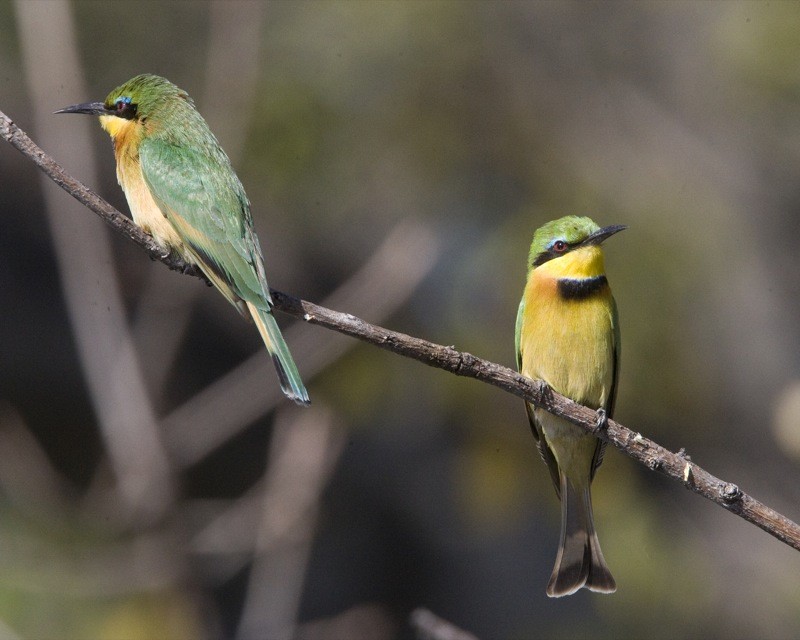Little Bee-eater
A species of Typical Bee-eaters Scientific name : Merops pusillus Genus : Typical Bee-eaters
Little Bee-eater, A species of Typical Bee-eaters
Botanical name: Merops pusillus
Genus: Typical Bee-eaters
Content
Description General Info
 Photo By Lip Kee , used under CC-BY-SA-2.0 /Cropped and compressed from original
Photo By Lip Kee , used under CC-BY-SA-2.0 /Cropped and compressed from original Description
The little bee-eater (Merops pusillus) is a near passerine bird species in the bee-eater family, Meropidae. They are residents in much of Sub-Saharan Africa. They should not be confused with the little green bee-eater, Merops orientalis. Migration is limited to seasonal movements depending on rainfall patterns. Members of this species, like other bee-eaters, are rich and brightly-coloured slender birds. They have green upper parts, yellow throats, black gorgets, and rich brown upper breasts fading to buffish ochre on the belly. Their wings are green and brown, and their beaks are black. They reach a length of 15–17 cm, which makes them the smallest African bee-eater. Sexes are alike. Often silent, their call is a soft "seep." These are abundant and tame birds, familiar throughout their range. There have been estimated to be between 60-80 million little bee-eaters. They breed in open country with bushes, preferably near water. Just as the name suggests, bee-eaters predominantly eat insects, especially bees, wasps and hornets, who are caught in the air by sorties from an open perch. This species often hunts from low perches, maybe only a metre or less high. Before eating their meal, a bee-eater removes the sting by repeatedly hitting the insect on a hard surface. Unlike most bee-eaters, these are solitary nesters, making a tunnel in sandy banks, or sometimes in the entrance to an Aardvark den. They lay 4 to 6 spherical white eggs. Both the male and the female take care of the eggs. These birds roost communally, lined up on a tree branch. 
Size
17 cm
Nest Placement
Burrow
Feeding Habits
Little Bee-eater predominantly consumes insects, particularly various bees and wasps, making up 40-75% of its diet. It hunts from perches by hawking insects mid-air, with about 40 forays every hour and a one-third success rate.
Habitat
Little Bee-eater typically inhabits grassy areas with a close proximity to water. Its environment ranges from seasonal marshes, lakeshores, and riverbanks to cultivated lands and savannas, both wooded and open. Little Bee-eater is often found in regions with drying marshes containing tall grasses and sedges among Mimosa pigra shrub thickets. It adapts readily to cleared lands within forests overtaken by grasses like Panicum.
Dite type
Insectivorous
General Info
Feeding Habits
Bird food type
Species Status
Not globally threatened.